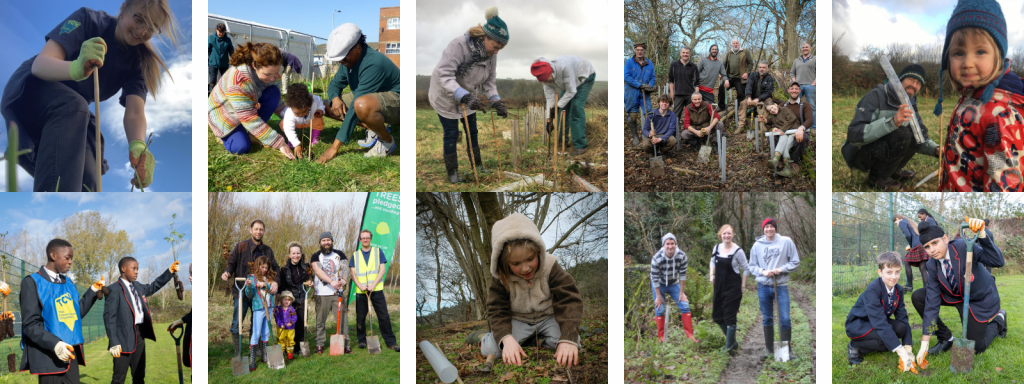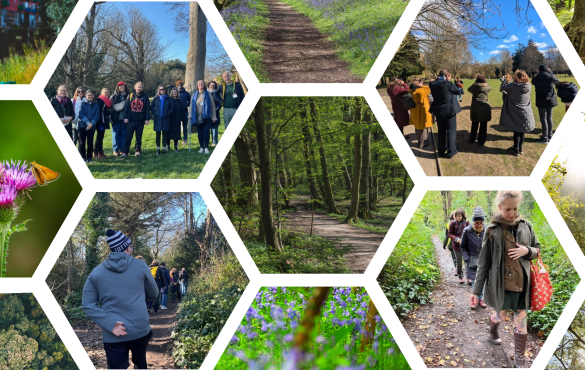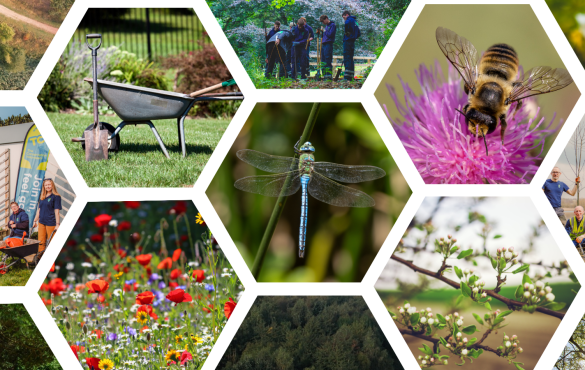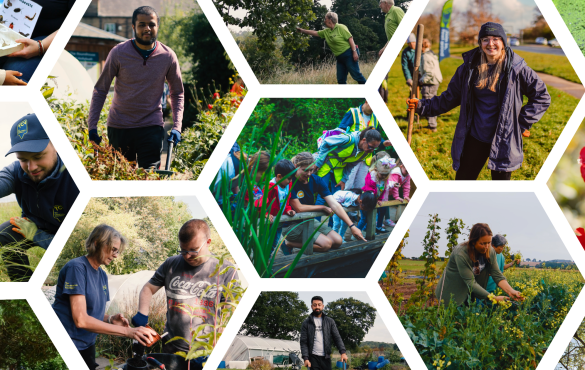As the leaves begin to turn and the air grows crisp, signalling the arrival of autumn, it’s also the start of seed gathering season for The Conservation Volunteers (TCV)!
For those who share TCV’s passion for wildlife conservation, this time of year presents a unique opportunity to help preserve the beauty of our natural landscapes and encourage our green spaces to thrive with biodiversity.
In this blog post, we’ll delve into the benefits of seed gathering, explore the various techniques and tools involved, and discuss how you, your friends, family, and community can participate in this satisfying and rewarding endeavour.
At the end of the article, we also point you in the direction of further resources that will take you to the next level, making you an expert in tree seed harvesting, sowing, growing and transplanting. Plus, of course, we highlight our phenomenal free trees programme – I Dig Trees.
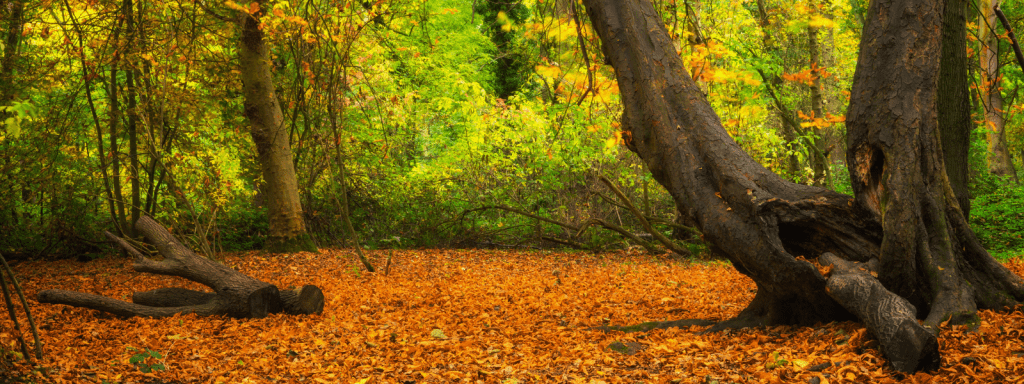
What is seed gathering season?
Seed gathering season typically runs from September to November in the UK, during which time many native trees, shrubs, and wildflowers produce ripe seeds ready for collection.
This period is critical for the reproduction and dispersal of native plant species throughout the land. By gathering these seeds (which by means of pollination and natural selection are well adapted to the local environment), we can help maintain genetic diversity, ensuring the resilience of our natural environment. Seeds can also be gathered from your fruit and vegetable growing endeavours of course.
Why should we gather seeds?
Gathering seeds offers numerous benefits, both ecological and personal. Here are just a few reasons why it’s worth your while:
- Conservation: Collecting seeds helps protect and promote biodiversity, allowing us to preserve the richness of UK flora and subsequently fauna. By growing new plants from gathered seeds, we can restore or protect habitats, stabilize ecosystems, and support the recovery of threatened species such as pollinating insects, birds and amphibians.
- Climate change mitigation: As climate change affects seed production and distribution, seed gathering becomes increasingly vital. By banking local seeds and propagating these plants, we safeguard against potential losses and ensure future generations can enjoy the same plant species we do today. Think of it as leaving a green legacy.
- Community engagement: Seed gathering and seed swapping provides an excellent opportunity to connect with others and build relationships within our local communities. Join forces with friends, family, or fellow conservationists to create a shared vision for a greener, healthier environment.
- Personal development and health: Learning about seed-gathering techniques and plant identification skills can enhance your appreciation for nature and foster a deeper connection with the great outdoors. It’s also a great excuse to get outside for a walk (perfect for maintaining physical health), and it’s a fun and fulfilling activity for all ages – so great as a family activity.
Additionally, saving seeds from our own gardens and green spaces allows us to propagate our favourite plants and share them with others. If you ever worry about over-consumption and consumerism and the issues of transporting goods and natural resources across the globe, this is as good an activity as it gets.
It can, of course, be a great money saver too!
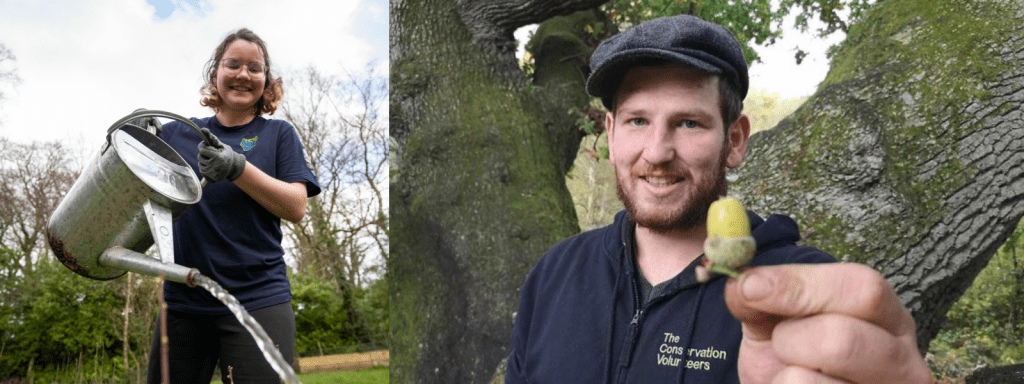
Did you know? TCV’s Tree Nursery in Cultra, Northern Ireland has been growing native provenance trees from locally collected seed for over 30 years. Northern Ireland has only 8% tree cover, one of the lowest in Europe. With the help of a wonderful group of volunteers, our work ensures that conservation areas are protected, and woodland cover is increased.
When to collect seeds
Different plant species mature at distinct times, so it’s crucial to monitor their growth and harvest seeds accordingly. Generally, the ideal time to collect seeds is when they are fully ripe and ready to disperse naturally.
To determine if seeds are ready for collection, inspect the plant or tree regularly. Look for signs such as seed pods turning brown or splitting open, or fruits becoming soft and juicy. Once you notice these indicators, immediately retrieve the seeds to prevent loss through natural dispersal or predation – but remember to always leave the larger portion for the local wildlife as these can be vital food sources and overwintering habitats. Our wonderful wild animals and birds also do their own bit for seed dispersal by carrying the seed far afield in their guts and packaging them neatly in natural organic fertilizer (poo) ready for the arrival of warmer weather and seed germination to begin.
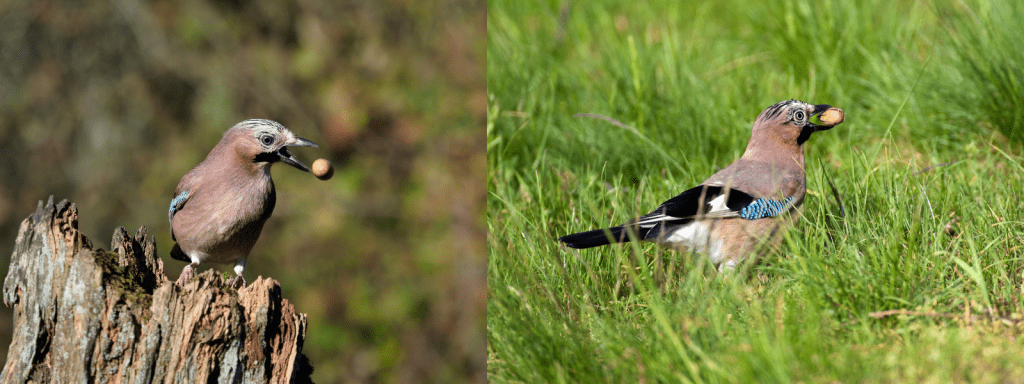
Seed collection techniques
Before setting out to collect seeds, it’s worthwhile to familiarize yourself with proper techniques to avoid damaging the plants or causing unintended harm to the environment. Here are some guidelines to follow:
- Always obtain permission before collecting seeds from private land or protected areas.
- Use clean equipment and containers to prevent cross-pollination and contamination.
- Harvest seeds from healthy, vigorous plants to maximize genetic quality.
- Take only a small portion of the available seeds to leave enough for natural dispersal (see above).
- Handle delicate plant material gently to minimize damage.
- Record details about the plant, location, date, and weather conditions to aid in tracking and analysis.
- Keep the ripe seeds cool and dry to maintain their viability.
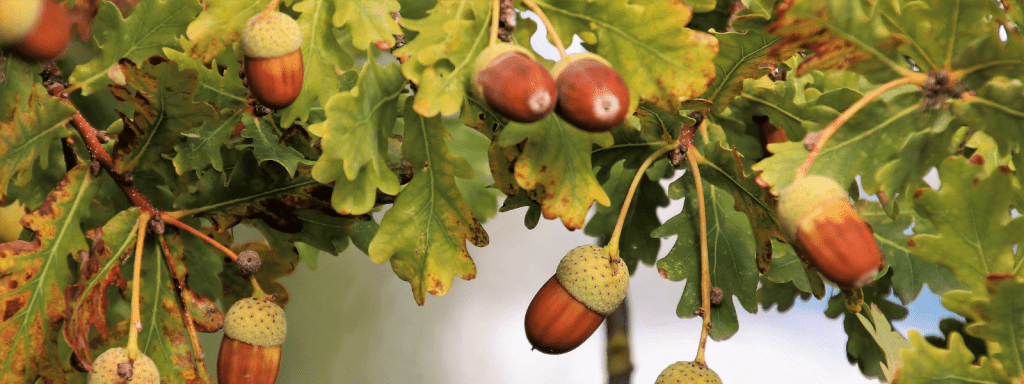
Seed harvesting tools
While you certainly don’t need fancy equipment to collect seeds, having the right tools can simplify the process and protect the plants. Consider investing in or borrowing the following items:
- Clean paper or cloth bags or envelopes for storing seeds.
- Small, clean, sharp pruning shears or clippers.
- Garden gloves to handle thorny or prickly plants.
- A hand lens or magnifying glass to inspect seed detail. This can be great fun for inquisitive children!
- Notebook and pen for recording data – date + location + plant name, plus you could make a quick sketch if you’re feeling inspired by the natural beauty of the seed heads and fruits.
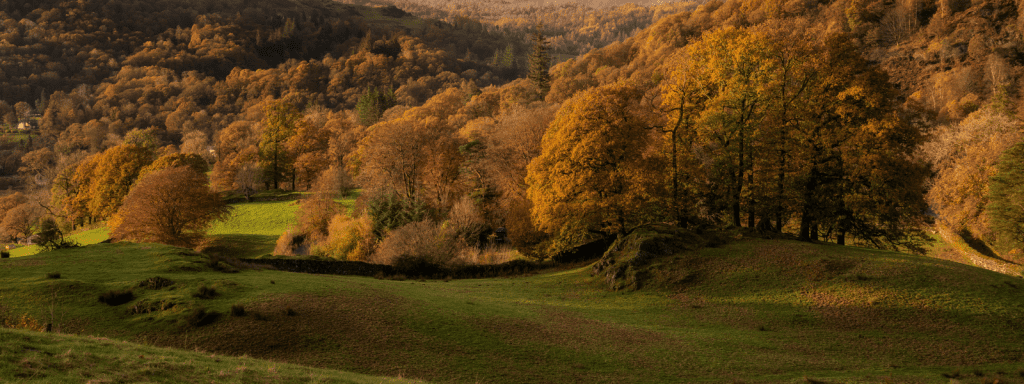
Seed storing
Proper storage ensures that collected seeds remain viable for germination and growth. Follow these steps to keep your seeds fresh and healthy:
Once dry, store seeds in airtight containers, such as glass jam jars, to prevent moisture and insect damage. If using immediately the following season clean paper or cloth bags or envelopes will also work well.
Keep seed containers in a cool but dry, preferably dark place, such as a basement or cupboard.
Label each packet/container clearly with the plant name, collection date, and location.
Seed swapping
Seed swapping is a great way to increase biodiversity in your garden and green spaces and connect with other gardeners and conservationists in your local community.
It’s simple: each participant brings their own seeds to exchange with others. This way, everyone goes home with new seeds to try out. It’s a great way to save money, avoid waste (you can include leftover vegetable seeds from packets you have bought – we all have these!), and propagate locally sourced native wildflowers and trees.
To host a seed swap, choose a date and time that works for your community, and find a venue that’s easy to access and has enough space for everyone. You might consider partnering with a local community centre, allotment, or library.
Promote your seed swap through social media, email, and local gardening groups. Ask participants to bring their own seeds, labelled with the type and any relevant growing information. You might also consider having some basic supplies, like envelopes and pens, on hand to help people package and label their seeds.
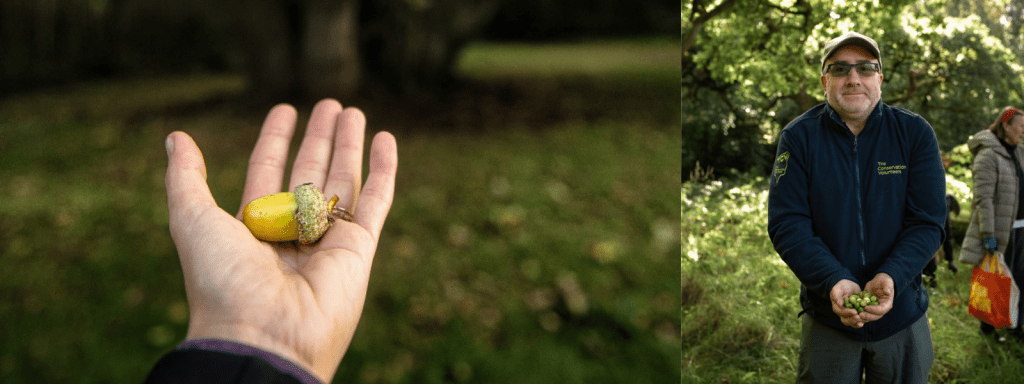
Further seed gathering and tree growing resources from TCV
Are you wanting to collect and process tree seeds specifically? Be sure to check out TCV’s Tree Growing webpages where there’s a wealth of further information on gathering and processing tree seeds including extracting seed from soft fruits, sowing, growing and transplanting! You can also download a free copy of TCV’s Autumn Seed Harvest Handbook
Need free trees? Head over to our I Dig Trees pages to claim your free trees now and be sure to check out our Tree Library, helping you to choose the right trees for your community green spaces.
You can also brush up on your tree-planting techniques with the following video…
TCV is also developing innovative seed collection strategies with our corporate partners and their employees, which we will then go on to nurture and grow locally. Click the link if you would like to find out more about our corporate Volunteering programmes or if you would like to support our I Dig Trees programme as a corporate supporter!
Conclusions
Seed gathering is a wonderful activity that not only promotes biodiversity but also brings communities together. By growing plants and trees from locally collected seed, we can help preserve the genetic heritage of UK wildlife and support the growth of native plants. This, in turn, enhances the resilience of our natural environments, ensuring a thriving ecosystem for generations to come.
Let’s continue to celebrate and support seed gathering initiatives across the UK, fostering a deeper connection between people and their local wildlife.
__________________________________________
Keep up to date with the latest news and activities from The Conservation Volunteers by following us on Twitter, Facebook, LinkedIn and Instagram. You can also sign up to receive our Greenzine newsletter for more ways to get involved.
Visit www.tcv.org.uk and add your postcode to explore the volunteering opportunities available in your area.
